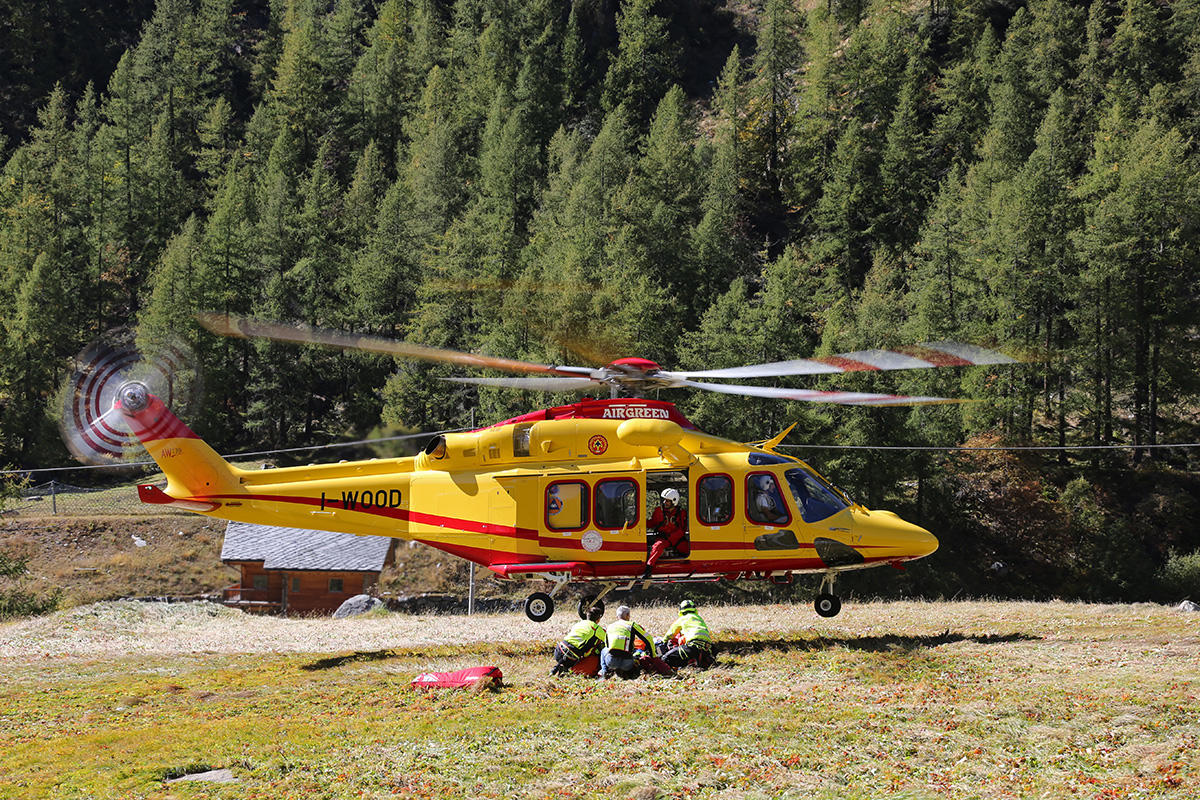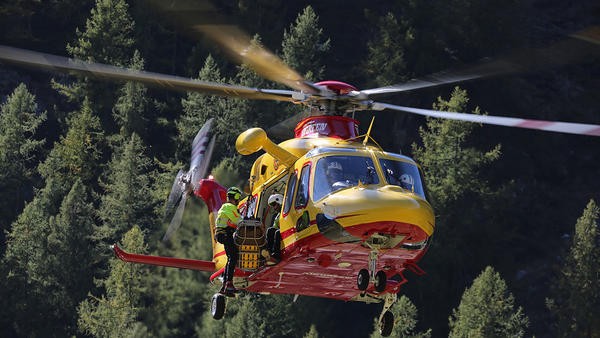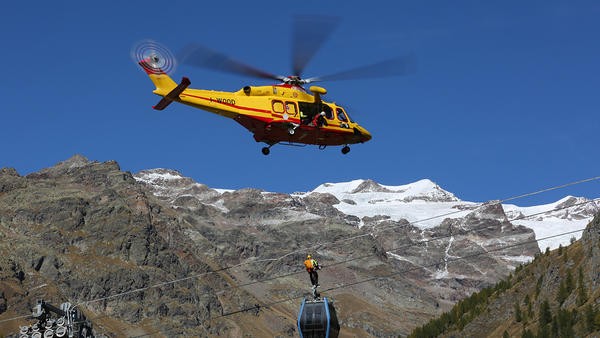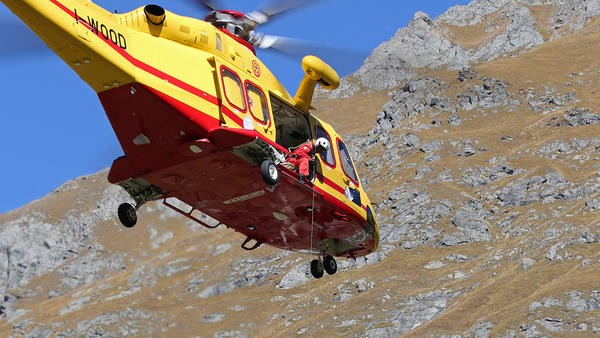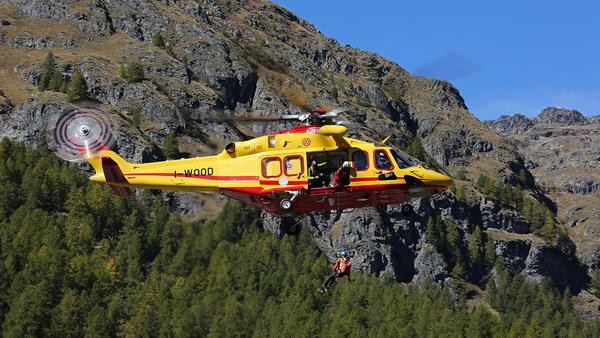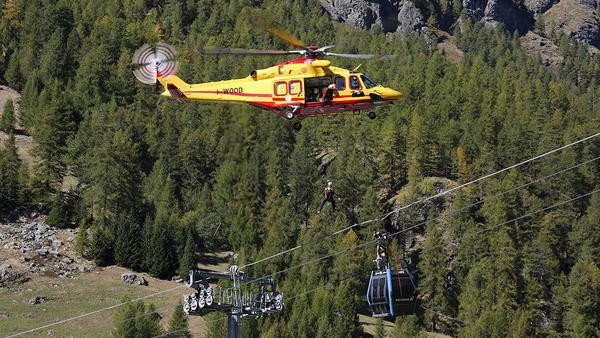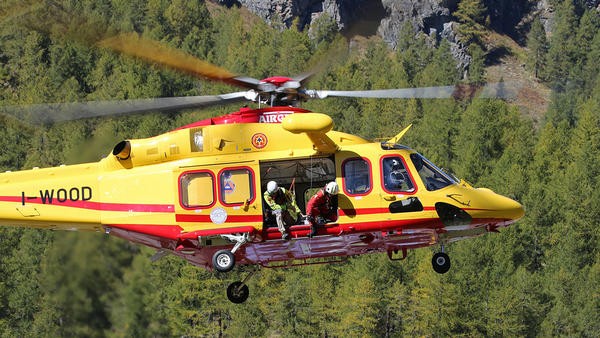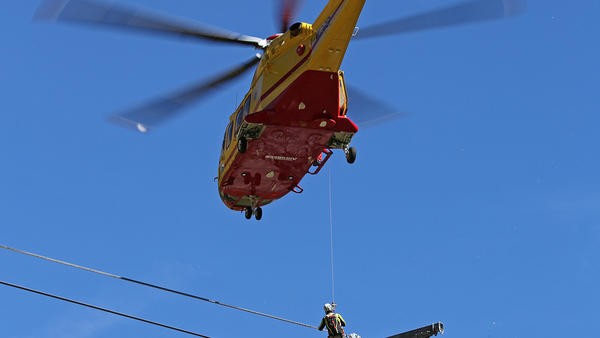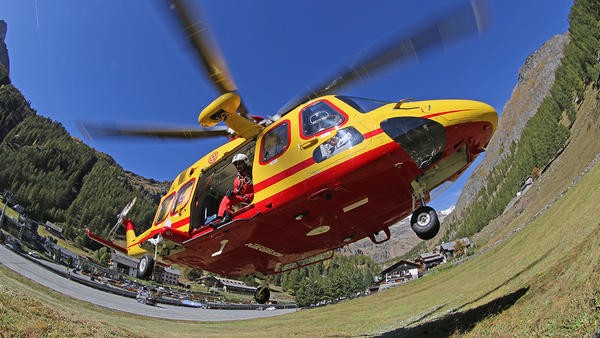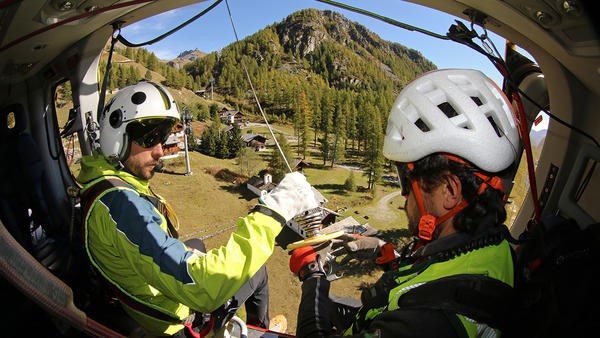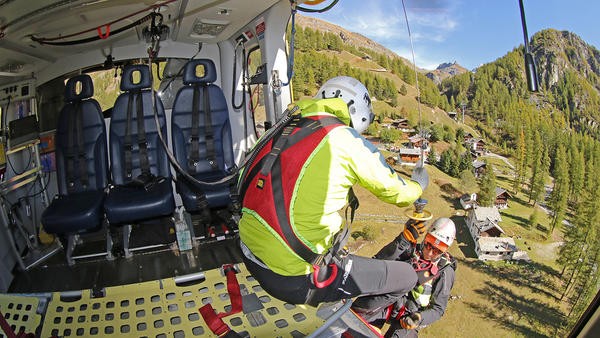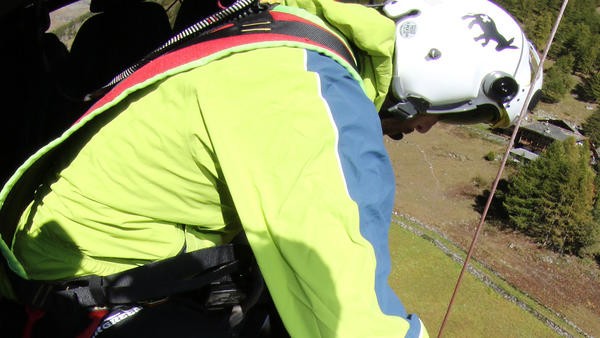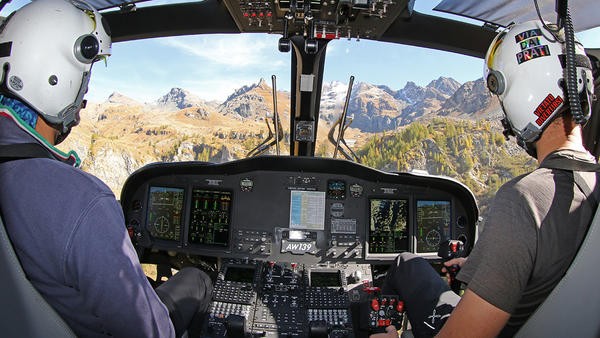Gallery: Cable Car Rescue Training in the Italian Alps

Heli rescue exercise on a mountain cableway
Dino Marcellino reports on a training exercise undertaken by Soccorso Alpino Valdostano – Aosta Valley Mountain Rescue – where both doctors and technical rescuers had the chance to hone their skills in cable car rescues. The activity took place in Gressoney-Staffal, at the foot of Monte Rosa, using an AW139 operated by Airgreen Company.
There are two schools of thought concerning the position of the helicopter vis-a-vis the cable-car. The first sees the helicopter staying high to avoid the rotor downwash that can disturb the operation, while the second sees the helicopter staying low over the cabin. The second approach provides better visibility for the pilot and winchman, and was the exercise practised during the training session described in this report.
Five key steps during the winching operation require the following safety factors to be observed:
First step (the let down): This action always has to be performed on the external side of the cable-car roof; never vertically over the centre of the cabin.
Second step: When the rescuer is on the cabin roof, they must under no circumstances hook themselves on using carabiners or similar, but must simply grasp hold of the cabin (for example, embracing the cabin’s post).
Third step: When the rescuer lets go of the hook, they have to ensure it falls away as far as possible from the side of the cabin.
Fourth step: The rescuer uses the track cable as the best point on which to anchor his rope line. Then, using the appropriate lever, they clear the cabin doors and descend in front of them. In doing so, they form a barrier with their body, so that nobody inside the cabin can accidentally fall out.
Fifth step: The rescuer slings the passengers, one at a time, using an evacuation harness or similar. It is possible to evacuate two at a time, but it is easier and safer to let down one. The rescuer must consider that people might be frightened or injured, and some will likely be children. The rescuer also has to evaluate other factors, such as how many have to be evacuated, how long the operation will take and how much daylight time remains.
All copy and images courtesy of Dino Marcellino.
